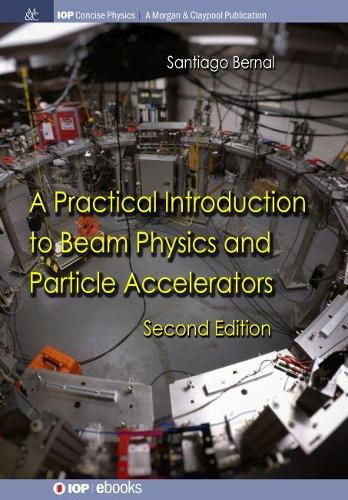Readings Newsletter
Become a Readings Member to make your shopping experience even easier.
Sign in or sign up for free!
You’re not far away from qualifying for FREE standard shipping within Australia
You’ve qualified for FREE standard shipping within Australia
The cart is loading…






This title is printed to order. This book may have been self-published. If so, we cannot guarantee the quality of the content. In the main most books will have gone through the editing process however some may not. We therefore suggest that you be aware of this before ordering this book. If in doubt check either the author or publisher’s details as we are unable to accept any returns unless they are faulty. Please contact us if you have any questions.
This book provides a brief exposition of the principles of beam physics and particle accelerators with an emphasis on numerical examples employing readily available computer tools. However, it avoids detailed derivations, instead inviting the reader to use general high-end languages such as Mathcad and Matlab, as well as specialized particle accelerator codes (e.g. MAD, WinAgile, Elegant, and others) to explore the principles presented. This approach allows readers to readily identify relevant design parameters and their scaling. In addition, the computer input files can serve as templates that can be easily adapted to other related situations.
The examples and computer exercises comprise basic lenses and deflectors, fringe fields, lattice and beam functions, synchrotron radiation, beam envelope matching, betatron resonances, and transverse and longitudinal emittance and space charge.
The last chapter presents examples of two major types of particle accelerators: radio frequency linear accelerators (RF linacs) and storage rings. Lastly, the appendix gives readers a brief description of the computer tools employed and concise instructions for their installation and use in the most popular computer platforms (Windows, Macintosh and Ubuntu Linux). Hyperlinks to websites containing all relevant files are also included. An essential component of the book is its website (actually part of the author’s website at the University of Maryland), which contains the files that reproduce results given in the text as well as additional material such as technical notes and movies.
$9.00 standard shipping within Australia
FREE standard shipping within Australia for orders over $100.00
Express & International shipping calculated at checkout
This title is printed to order. This book may have been self-published. If so, we cannot guarantee the quality of the content. In the main most books will have gone through the editing process however some may not. We therefore suggest that you be aware of this before ordering this book. If in doubt check either the author or publisher’s details as we are unable to accept any returns unless they are faulty. Please contact us if you have any questions.
This book provides a brief exposition of the principles of beam physics and particle accelerators with an emphasis on numerical examples employing readily available computer tools. However, it avoids detailed derivations, instead inviting the reader to use general high-end languages such as Mathcad and Matlab, as well as specialized particle accelerator codes (e.g. MAD, WinAgile, Elegant, and others) to explore the principles presented. This approach allows readers to readily identify relevant design parameters and their scaling. In addition, the computer input files can serve as templates that can be easily adapted to other related situations.
The examples and computer exercises comprise basic lenses and deflectors, fringe fields, lattice and beam functions, synchrotron radiation, beam envelope matching, betatron resonances, and transverse and longitudinal emittance and space charge.
The last chapter presents examples of two major types of particle accelerators: radio frequency linear accelerators (RF linacs) and storage rings. Lastly, the appendix gives readers a brief description of the computer tools employed and concise instructions for their installation and use in the most popular computer platforms (Windows, Macintosh and Ubuntu Linux). Hyperlinks to websites containing all relevant files are also included. An essential component of the book is its website (actually part of the author’s website at the University of Maryland), which contains the files that reproduce results given in the text as well as additional material such as technical notes and movies.